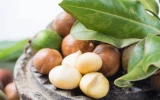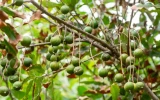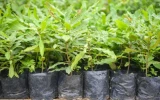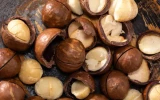How Often Are Macadamia Trees Harvested? (Harvest Chart)
Macadamia trees commonly begin to bear nuts around the fifth to seventh year, and only reach full production by the tenth year. Once they start producing, you can enjoy the fruiting season between late fall and spring, depending on your location. In this article, we'll help you find out how often macadamia trees can be harvested using a harvest chart.
Macadamia trees are typically harvested once a year. However, in major growing regions like Australia, you can harvest them multiple times throughout the season. When the climate is just right, and temperatures average around 77ºF, your macadamia trees will thrive and produce their best yield.
To gauge the right time for harvesting, you can look out for nuts that have fallen to the ground, a natural indicator that they're ready. You have two primary choices for harvesting these nuts: either by manual picking or via mechanical harvesting.
Understanding the typical macadamia harvest frequency allows a newly set farm to properly plan labor, facilities, equipment, transportation, quality control, and finances.
Summary
- Growers in areas such as Australia usually aim for multiple harvests throughout the season to capture the nuts at their peak ripeness.
- In contrast, regions like Hawaii, California, and Florida typically have an annual harvest, aligning with the maturation of the nuts and the specific climate conditions of each area.
- In Hawaii, the cooler temperatures and lower humidity levels during late fall and winter contribute to the readiness of macadamia nuts for harvesting.
- In California and Florida, the warm to hot summers and mild winters they experience, create favorable conditions for macadamia nut development and maturation.
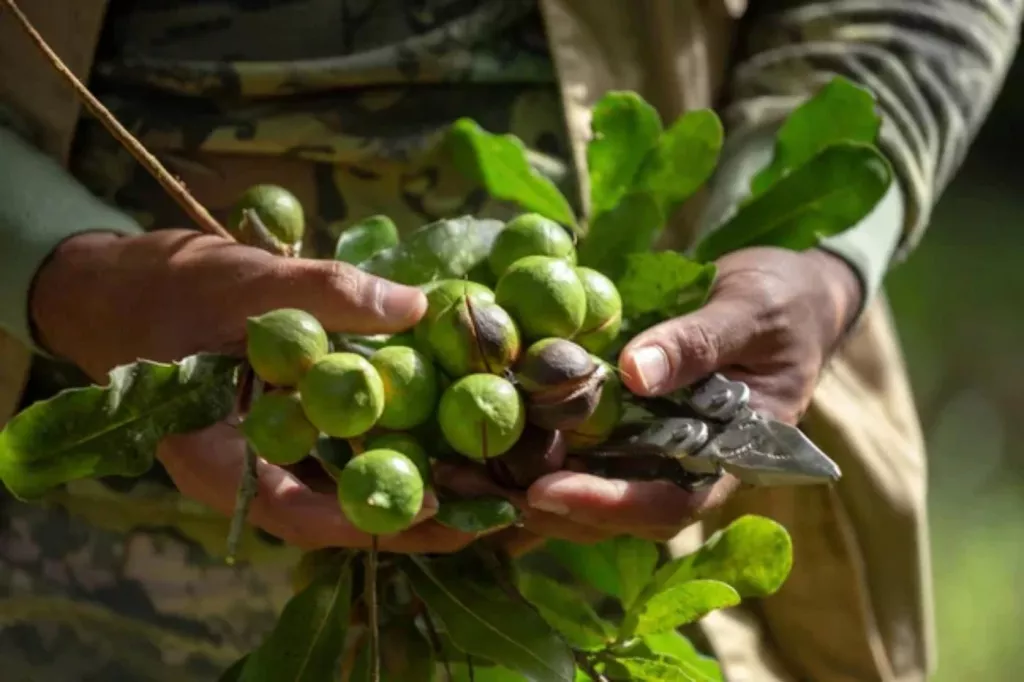
Frequency of Harvesting Macadamia Trees
Macadamia trees are typically harvested once a year, usually in late fall or early winter, when the nuts are mature and ready for picking. The exact timing of the harvest can vary depending on the specific growing region and climate conditions.
To visualize when you might be harvesting, here's a straightforward harvest chart for macadamia nuts:
| Region | Harvest Season | Estimated Frequency Of Harvest |
|---|---|---|
| Australia | March to September | Multiple times throughout the season |
| Hawaii | August to December | Once a year |
| California & Florida | September to October | Once a year |
Macadamia nuts are typically harvested at different times in various regions due to the specific climate conditions that affect the growth and maturation of the nuts.
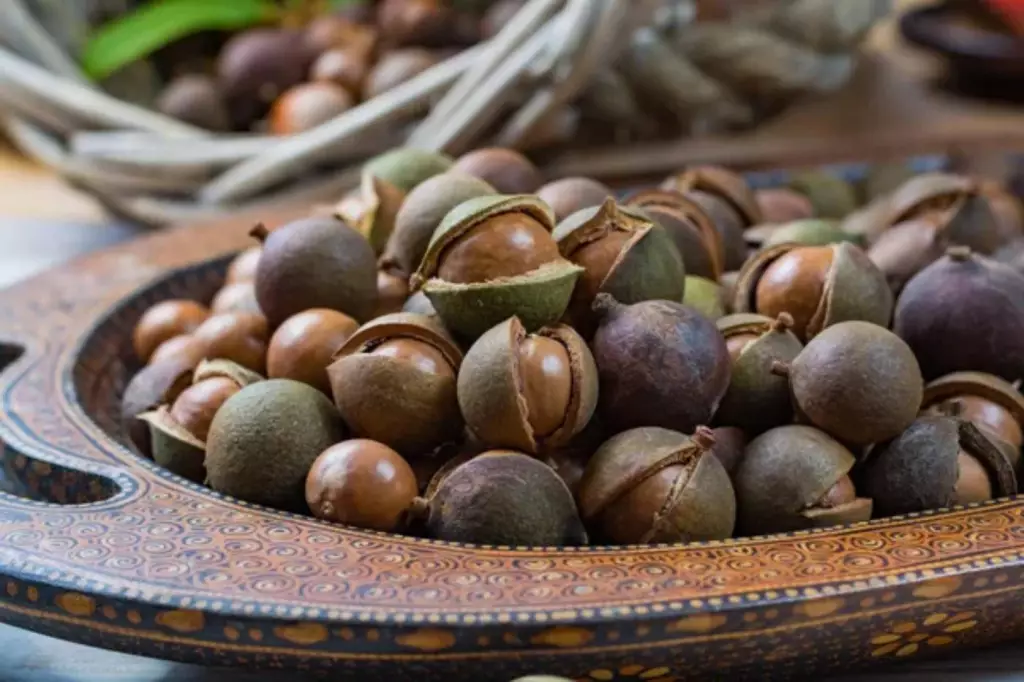
The harvesting season in Australia starts from March to September
In Australia, the main macadamia growing region, the harvesting season usually occurs from March to September. This timing is associated with the climate conditions in Australia, where the nuts mature and are ready for harvest during the cooler months.
Macadamias are native to Australia and are primarily grown in northern New South Wales and Southeastern Queensland. The extended period of harvest from March to September allows for a staggered harvest, which is essential for ensuring a continuous supply of fresh macadamias to meet both domestic and international demand.
During the harvesting season, macadamia growers carefully monitor the maturity of the nuts to determine the optimal time for harvesting. This involves assessing the readiness of the nuts by observing their color, texture, and moisture content.
Once deemed ripe, the nuts are carefully collected from the trees to ensure minimal damage and maintain their quality.
The frequency of harvesting activities during the macadamia season varies depending on factors such as weather conditions, orchard size, and the specific cultivars being grown. Typically, growers aim to harvest their macadamia orchards multiple times throughout the season to capture the nuts at their peak ripeness.
The practice of multiple harvests is driven by the fact that macadamia nuts do not ripen simultaneously on the tree. Instead, they mature gradually over an extended period.
As a result, a single harvest would not capture all the nuts at their optimal ripeness, potentially leading to a mix of under-ripe and over-ripe nuts, which can impact the overall quality of the yield.
By conducting multiple harvests, growers can carefully monitor the maturity of the nuts and selectively pick those that have reached their peak ripeness. This approach allows them to gather nuts with the best flavor, texture, and nutritional content, ensuring a premium product for consumers.
Additionally, harvesting the nuts multiple times also helps to manage the workload and optimize resource allocation. By spreading the harvest over several rounds, growers can effectively utilize their labor and equipment, reducing the risk of bottlenecks and ensuring that the nuts are collected and processed promptly.
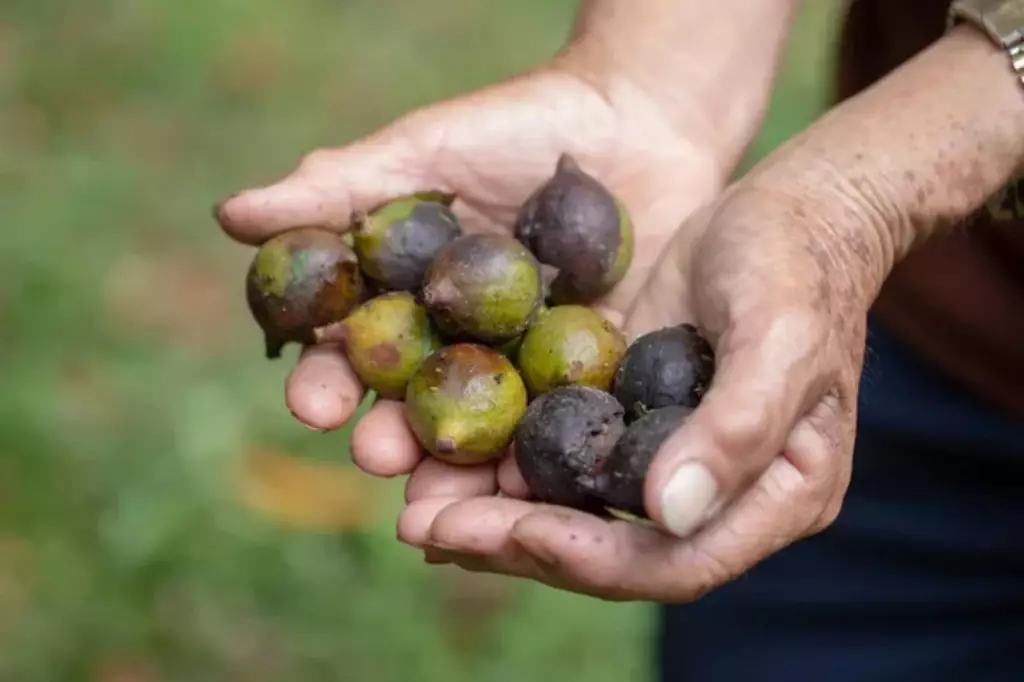
The harvesting season in Hawaii is from August to December
In Hawaii, another significant macadamia-growing region, the harvest season typically runs from late fall through winter, which is from August to December.
This timing aligns with the climate conditions in Hawaii, where the cooler temperatures and lower humidity levels during these months are conducive to the maturation and harvesting of macadamia nuts.
During this time, the macadamia trees yield mature nuts that are ripe for picking. The nuts are then processed to extract the edible kernels, which are highly valued for their rich, buttery flavor and nutritional benefits.
It is essential to harvest the nuts at the right stage of maturity to achieve the best flavor and texture. Additionally, the seasonal timing allows for efficient planning and management of the harvest, processing, and distribution of the nuts to markets both locally and internationally.
In Hawaii, macadamia trees are typically harvested once a year. This annual harvest allows for the collection of mature macadamia nuts at their peak ripeness, ensuring optimal quality and flavor.
The timing of the harvest is carefully planned to coincide with the period when the nuts are fully developed and ready for picking. This approach helps maintain the sustainability of macadamia orchards and supports the long-term productivity of the trees.
When growing macadamias in regions such as Hawaii, consider a location where the trees can receive a sufficient amount of light for optimal growth and nut production.
The harvesting season in California and Florida starts from September to October
In California and Florida, the harvest season typically occurs from September to October. Both states have distinct climate characteristics that contribute to the maturation of macadamia nuts and the eventual harvest.
In California, where macadamia cultivation is concentrated in regions such as Southern California and the Central Valley, the climate is generally characterized by warm to hot summers and mild winters.
The temperature and precipitation patterns in these areas create favorable conditions for macadamia trees to develop and ripen their nuts. The warm summer months provide the necessary heat for the nuts to mature, while the relatively mild winters allow the trees to sustain their growth through the dormant season.
Similarly, in Florida, where macadamia cultivation is prominent in regions with a subtropical climate such as the southern part of the state, the weather patterns contribute to the development of macadamia nuts.
The warm and humid conditions during the growing season support the maturation of the nuts, while the subtropical climate ensures that the trees have the necessary warmth and moisture to thrive.
The frequency of the macadamia harvesting season in California and Florida typically occurs once a year. This annual cycle aligns with the maturation of the macadamia nuts, which are ready for picking during this period.
Macadamia trees produce a single main crop of nuts each year, and the timing of the harvest is largely determined by the maturation process, which is influenced by the climate conditions in these regions.
Harvesting Macadamia Nuts
In this section, you'll learn to recognize when the nuts are ripe, the various methods to harvest them, and the post-harvest procedures necessary to prepare the nuts for consumption or sale.
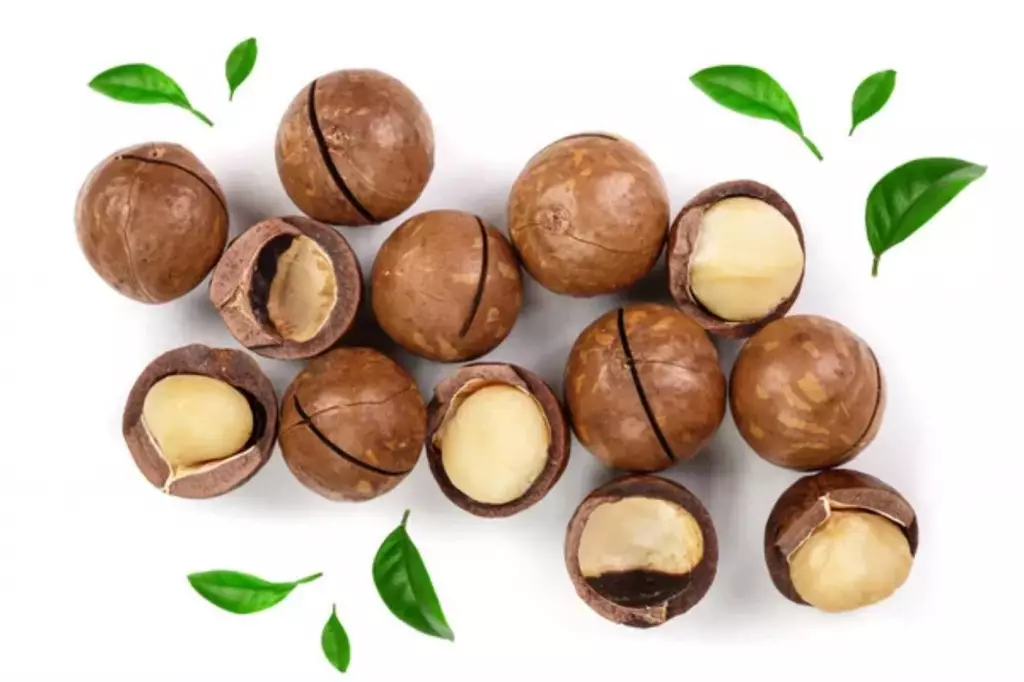
Signs of ripeness or readiness for harvest
Below are some things you can look out for on how to determine when to harvest macadamia nuts:
-
Look for the natural fall of ripe nuts: The husks will split open, indicating they're ready for collection. Unripe nuts have tight husks and should ideally remain on the tree to mature.
-
Note the change in shell color: Ripe macadamia nuts often have a darker shell color compared to unripe nuts. The shell may also become slightly brittle when the nuts are ready for harvest.
-
Assess the weight: Ripe macadamia nuts tend to feel heavier compared to unripe nuts. This can be a useful indicator when assessing the ripeness of the nuts.
-
Listen closely to the sound when shaken: When shaken, ripe macadamia nuts produce a distinct rattling sound due to the kernel inside the shell being loose. Unripe nuts may not produce the same sound.
-
Feel out the texture: The outer shell of ripe macadamia nuts may feel slightly rough or textured, indicating that the nuts have reached maturity.
-
Compare the nut appearance: Ripe macadamia nuts often appear plump and full, with a healthy, glossy appearance. Unripe nuts may appear smaller and less developed.
-
Taste a sample: While this may not be practical for large-scale harvesting, tasting a sample of the nuts can help determine their ripeness. Ripe macadamia nuts have a rich, creamy flavor, while unripe nuts may taste bitter or underdeveloped.
Methods of harvesting macadamias
Macadamia nuts can be harvested using two primary methods: manual picking and mechanical harvesting.
In manual picking, the process involves collecting fallen fruit from the ground and handpicking any ripe nuts still on the tree. This method requires labor-intensive work but allows for careful selection of the nuts and reduces the risk of damaging the trees.
On the other hand, mechanical harvesting involves using equipment to shake the trees or sweep and collect the nuts off the ground. This method is more efficient and can significantly increase the speed of harvesting, especially in larger macadamia nut orchards.
For manual picking, it is recommended to do so every 2 weeks during the wet season and every 1 to 2 months during dryer periods to prevent mold or pest damage. This regular harvesting schedule ensures that the nuts are collected at their peak ripeness and minimizes the risk of spoilage.
Proper post-harvest handling of macadamia nuts
The post-harvest handling of macadamia nuts involves several key steps, including drying, dehusking, storage, and processing.
Dry the freshly harvested macadamia nuts
After harvesting, the nuts need to be dried to reduce the moisture content and prevent mold growth. Drying can be done using various methods, including sun-drying or using mechanical dryers. Properly dried macadamia nuts have a longer shelf life and better flavor.
Dehusk the macadamia nuts
The next step involves removing the hard outer shell or husk from the macadamia nuts. This can be done using mechanical crackers or specialized dehusking machines. Care must be taken to avoid damaging the nut kernel during this process.
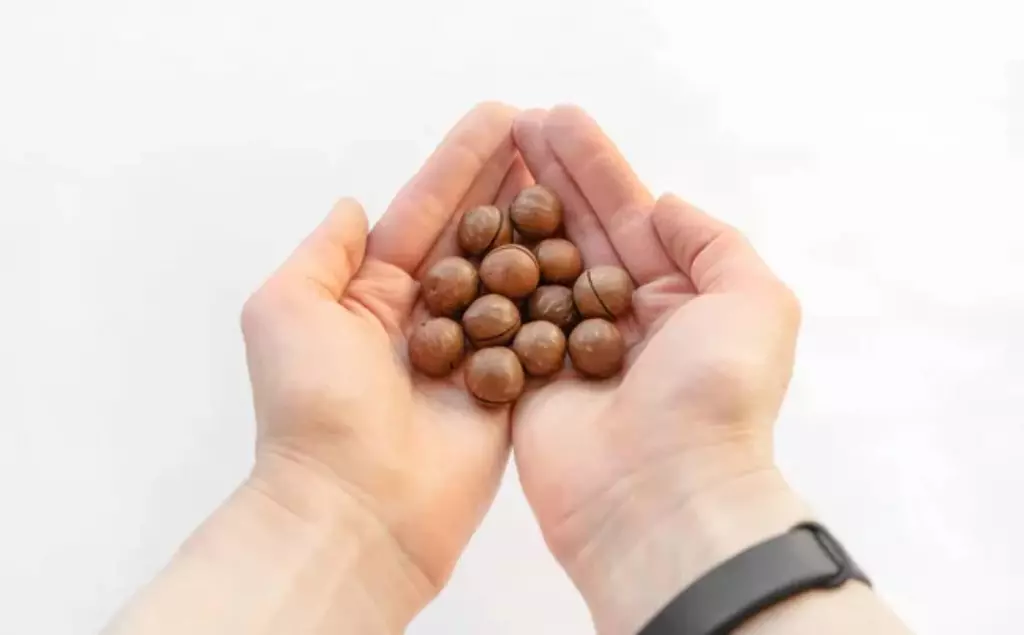
Store them properly
Once the nuts are dried and dehusked, they need to be stored properly to maintain their quality. Proper storage conditions include low humidity and cool temperatures to prevent rancidity and insect infestation. Vacuum-sealed bags or airtight containers are commonly used for storage.
Process the nuts
Macadamia nuts can be processed into various products such as whole nuts, halves, pieces, or even further processed into macadamia butter or oil.
Processing may involve sorting, grading, and packaging the nuts for distribution to consumers or further processing facilities.
Some value-added products that you can try turning your nuts into can be found in this article. These added products can help you boost profits from macadamia farming.
